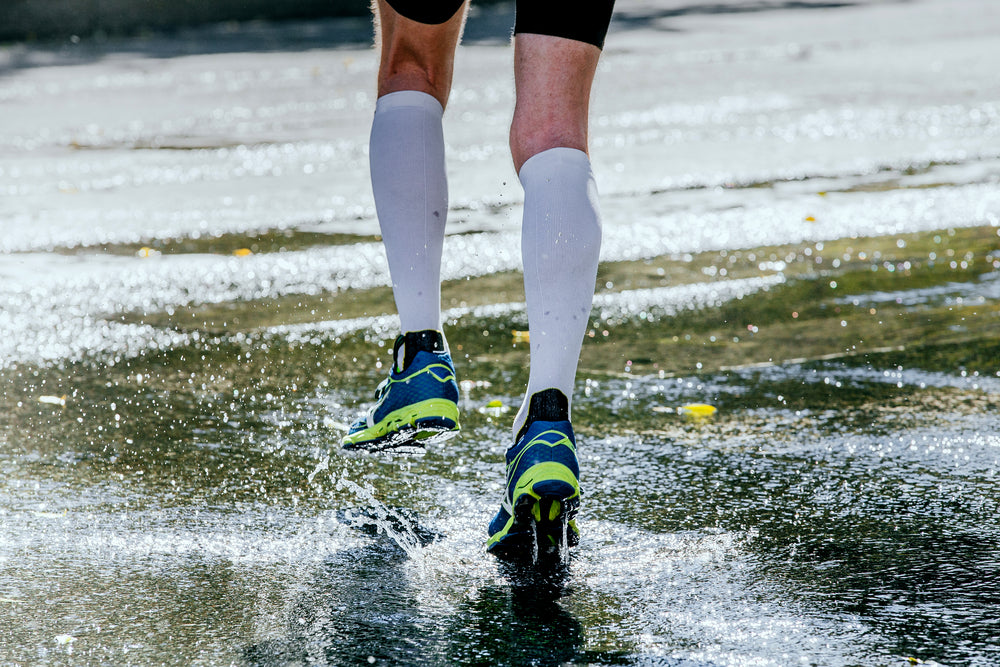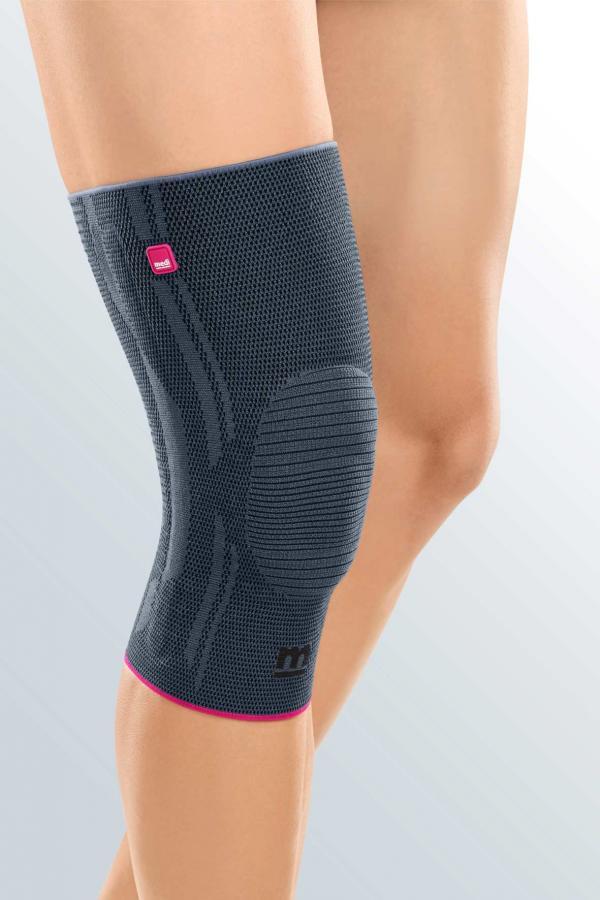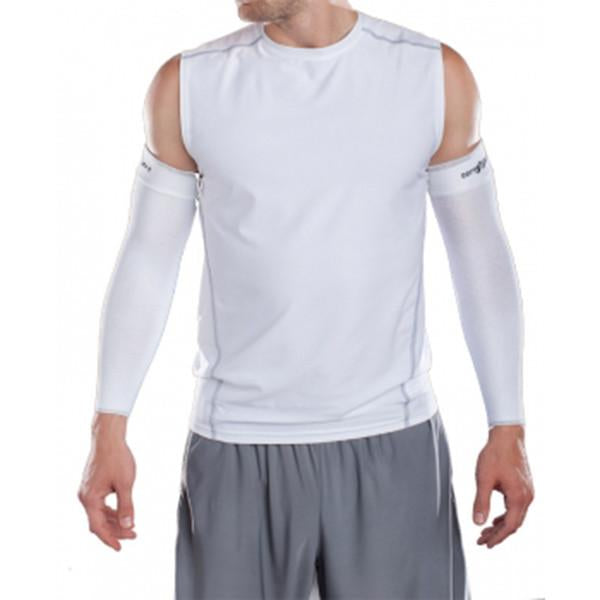4 Tips to Help Reduce Swelling with Compression Wear After an Injury
Many types of injuries to the body cause swelling. These include bone fractures, muscle strains, and sprains to areas such as the arms, legs, and feet. According to the medical experts at Healthline, some of the most common reasons for swelling after an injury include a buildup of fluid and inflammation.

If you notice a part of your body—such as your hand, leg, or knee—begins to enlarge, you should seek medical attention as soon as possible. Make sure you don’t have a break or serious reason for inflammation, such as bleeding. Once your injury has been checked out by a physician and stabilized, you’ll be free to rest and recover.
Compression wear may be recommended by your doctor while you heal, but how does compression reduce swelling after an injury? If you’re unsure whether you really need socks, hosiery, or an athletic armsleeve to heal, this article will explain their biggest benefits. You’ll also learn the different tricks for using compression products to help you mend faster and feel better.
1. Use Braces and Supports to Recover Faster
After a fall or an athletic injury, you may notice immediate swelling. It’s also possible that the symptoms begin later. Keep an eye on the area of concern so you can use a brace or support as needed. Putting a support or brace around the area helps to reduce movement and stress to your muscles that may occur while you’re walking, working, or running errands.
Wearing compression stockings improves blood circulation, which, in turn, promotes healing. The better the blood flows through the injured area, the quicker the body can absorb edema, or excess fluid.
Additional benefits of ankle supports, knee braces, and other similar products include decreased pressure and discomfort. If you’re searching for the right product for your needs, the best braces and supports to help heal an injury also include the right amount of compression. A firm 20-30 mmHg compression level will help to stabilize the area of concern and reduce inflammation as you walk and stand throughout your day.
Should you need extra support, buy a brace with anatomically shaped silicone inserts. These tiny enhancements make getting around more comfortable.

2. Try Socks and Hosiery to Enhance Circulation
Along with braces and supports, compression hosiery and socks are two types of garments that can help to promote circulation and reduce fluid buildup in swollen areas of your lower body. Once excess fluid is able to move out of the injury, it will begin to heal faster.
Which kind of compression gear should you choose? If you have a business dress code at work, it’s cold outside, or you simply need graduated compression throughout your leg, try hosiery. knee highs, thigh highs, and pantyhose are available. Best of all, you’ll find various lengths and widths for the most perfect fit.
Hosiery also comes in compression levels from mild (8-15 mmHg) to severe (40-50 mmHg), so you’ll be able to find a stylish pair no matter your doctor’s recommendations. Open toe, closed-toe, and footless tights are available for every preference and shoe type. If you’d like, you can also purchase a spectrum of colors, including nude, white, and black.
A cousin to hosiery, compression socks are perfect for any occasion. They’re also the ideal product for swollen or inflamed feet. You’ll find soft cotton blends, dynamic microfiber materials, and products with moisture-wicking properties. Socks range from mild (8-15 mmHg) to extra firm (30-40 mmHg), so you’ll meet your health goals no matter the severity of your condition.
3. Wear Arm Sleeves for Better Blood Flow
From muscle strains to bruising, there are many different types of arm injuries that can lead to discomfort and swelling. Just like compression hosiery and socks, athletic arm sleeves can help to reduce the buildup of fluid and promote blood circulation, as well as healthy white blood cells, to return to the area. Arm sleeves range from moderate compression (15-20 mmHg) to extra firm (30-40 mmHg), so you’ll find the right combination of protection, security, and comfort for your injury.
Choose from fun colors and interesting patterns. We have everything from Boho styles to seasonal tattoo prints. Since they’re both functional and trendy, you can wear them in the stadium, on the court, or while you’re relaxing and healing at home.

4. Get Active with Your Compression Gear
Once your doctor clears you to exercise, you may find that you start to heal even faster. This is because physical activity promotes blood flow to your arms and legs. Wear your compression arm sleeves or socks as you work out. Many athletic socks with compression are made of a special moisture-wicking material that helps to keep you dry while preventing the buildup of sweat and odors. Innovative cooling socks and sleeves are also available.
Athletic arm sleeves with trendy prints are comfortable and stylish on the track, field, or course. Wear them with a t-shirt or under your long sleeve. While you’ll want to ask your doctor before beginning any exercise plan, the Centers for Disease Control and Prevention (CDC) says that most adults should have approximately 150 minutes of weekly physical activity.
Compression Wear Can Help You to Heal Faster
No matter where you have suffered an injury, compression wear can help you on your road to recovery. Ask your doctor about which level of compression is best for your needs, and then shop for your favorite products and styles. Wear your compression gear as you rest your feet, take a walk, or run errands. With patience and persistence, you will soon return to your normal activities.
Kaki Zell - Vice President of Sales, Marketing, eCommerce at Legs-4-Life LLC Kaki holds a Bachelor of Science degree in Business Administration and Management from Virginia Polytechnic Institute and State University. She’s been working in the medical device industry for over 11 years and currently serves on the Board of Directors for the Greensboro Science Center.